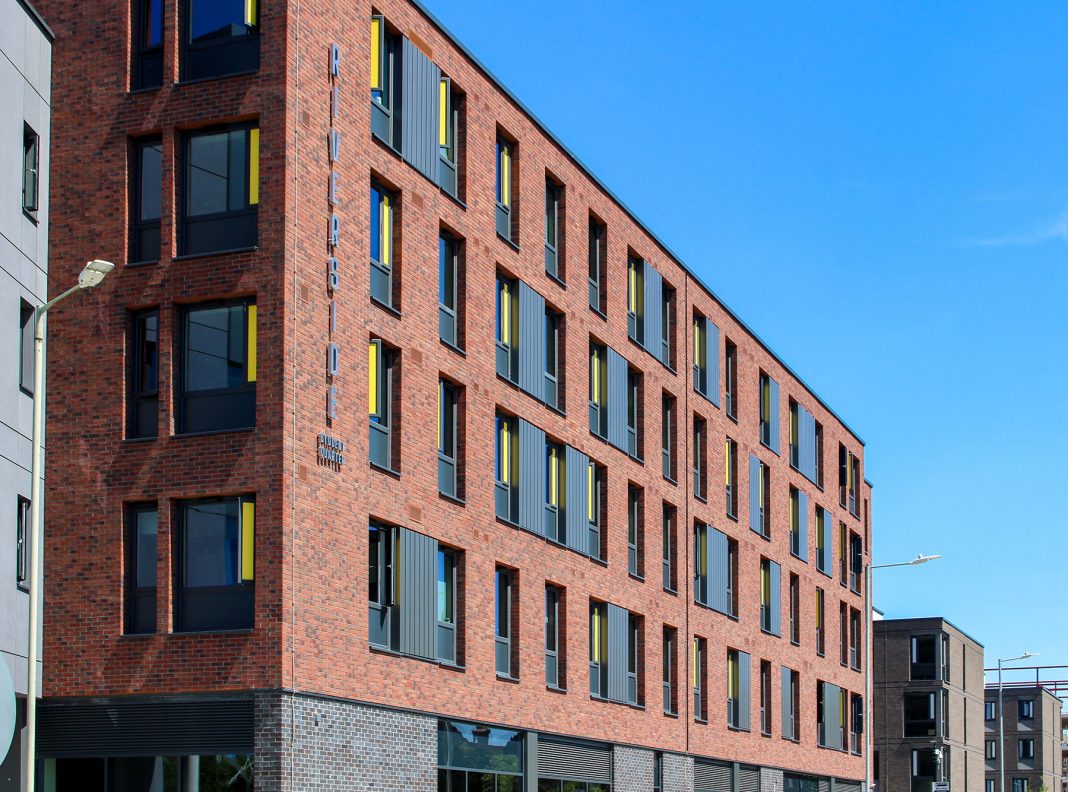Deceuninck fabricator Dempsey Dyer sent a consignment of windows to Morocco to be returned fitted in student accommodation pods in a project with developer Boygues that took the concept of offsite construction to a new level.
The work was part of The Riverside, a £115million mixed use development at the centre of a new leisure quarter in Canterbury.
Main contractor Bouygues UK wanted to drive a new approach to modular building, and enlisted the help of Dempsey Dyer as its fenestration partner. Deceuninck was also involved in the architect’s drawings and submission.
Over a two-year period, Dempsey Dyer supplied 666 Deceuninck Heritage Chamfered side-hung casements, foiled in smooth anthracite grey, with chrome hardware from Fab&Fix
Bouygues UK moved the construction of the student accommodation pods to Rabat in Morocco. Once constructed, these were shipped back to the UK where they were assembled on site.
The crates were packed at Dempsey Dyer, and loaded into shipping containers, which were transported by lorry to the port at Dover, before being shipped to Casablanca in Morocco. From there they were transported by lorry to Rabat, where the factory was located.
Dempsey Dyer’s project manager Anna Cusworth and installation manager Steve Burton spent two weeks in Rabat in Morocco to teach the construction workers at the modular construction factory how to install windows correctly.
“The workmanship in the factory in Morocco during our time there far exceeded the standard we see in UK construction,” Anna said. “Modular build enables a level of quality that is much harder to produce in the UK due to the nature of a construction site and all that affects it – weather, access, tolerances of all trades.”
As the pods were constructed and returned to the UK, they were assembled on site in Canterbury, where Dempsey Dyer installed bespoke cills for each window.
The main challenge facing all parties on the project was the restriction on movement following the Covid outbreak. This meant that during the design phase, Dempsey Dyer worked alongside the design teams from other organisations via Teams.
“In theory this was considered a negative, but in practice it worked exceptionally well, and it was a big positive for the project because most problems were ironed out thanks to swift collaboration,” Anna said.












